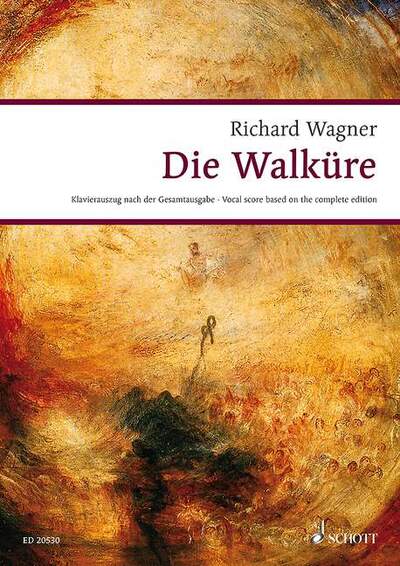- EAN13
- 9783795798734
- Éditeur
- Schott Music
- Date de publication
- 1 janvier 2013
- Collection
- CHANT
- Nombre de pages
- 356
- Dimensions
- 29,7 x 21 cm
- Poids
- 1159 g
- Langue
- ger
La Walkyrie, L'Anneau Du Nibelung, Festival Scénique En Trois Journées Et Un Prologue, Première Journée. Réduction Piano D'Après Les Œuvres Complètes De Richard Wagner. Wwv 86 B. Réduction Pour Piano.
Richard Wagner
Schott Music
Prix public : 81,25 €
An important addition to our newly produced orchestral materials is the first publication of vocal scores of Wagner’s ten great operas, in every important version, based on the Complete Edition. * The score corresponds to the performance materials from the Complete Edition. * For practical use in rehearsal cues and bar numbers throughout. * The publisher has secured the services of renewed musicologists associated with the Richard Wagner Complete Edition who convey detailed information in critical forewords. * The forewords are given in three languages(German, English, French). * Uniform and attractive front cover designs with reproductions of paintings from the Wagner era underline the series design of the edition. DIE WALKÜRE In the tetralogy Der Ring des Nibelungen [The Ring of the Nibelung] which was subtitled by Wagner as "A stage festival play for three days and a preliminary evening", Die Walküre [The Valkyrie] forms the "first day" following Das Rheingold as the preliminary evening. The beginning of the history of the origins of the tetralogy is frequently placed in 1848 when Wagner compiled a prose sketch entitled Die Nibelungensage (Erstschrift) [The Nibelung Saga (first draft)] or Die Sage von den Nibelungen (Reinschrift) [The Saga of the Niblelungs (fair copy)] which would suggest that this was already the text for the Ring des Nibelungen, but the actual concept for the tetralogy did not actually evolve until the autumn of 1851. When Wagner first compiled the libretto for the heroic opera Siegfried’s Tod [Siegfried’s Death] in November 1848 – during his period of employment as Hofkapellmeister[court music director] in Dresden – he was in fact only planning a single opera and continued to adhere to this concept even after his involvement in the failed Dresden uprising in 1849 and subsequent escape to Switzerland. He began with the composition of Siegfried’s Tod in the summer of 1850 in Zurich, but soon laid it aside. He returned to the project almost a year later in May 1851 with the idea of a two-part drama: to lend the plot greater conclusiveness, Siegfried’s Tod would be preceded by a second opera entitled Der junge Siegfried [The Young Siegfried], subsequently shortened to Siegfried, but this extension was still insufficient to satisfy Wagner’s dramatic-dramaturgic aspirations. In November 1851, he began the first text drafts for Das Rheingold and Die Walküre which were followed by the libretti in 1852: Die Walküre was completed in June 1852. The premiere of Die Walküre was held in Munich on 26 June 1870, but without Wagner’s specific permission as he did not wish the operas to be performed separately. He held the opinion that Die Walküre was only logical and comprehendible within the context of the complete tetralogy. Wagner had however not only made a present of the autograph score to King Ludwig II of Bavaria who had been his generous benefactor since 1864, but had also sold him the rights to the tetralogy. The king was eager to experience performances of the already finished parts and Wagner was therefore powerless to prevent him from commanding performances of the individual operas. The premiere of Die Walküre within the context of the tetralogy took place in 1876 at the first Bayreuth Festival. (Egon Voss, quoted from the foreword of the new Die Walküre vocal score; translated by Lindsay Chalmers-Gerbracht) WWV 86 B


















